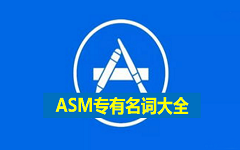State-of-the-art Named Entity Recognition(NER) models rely heavily on large amountsof fully annotated training data. However, ac-cessible data are often incompletely annotatedsince the annotators usually lack comprehen-sive knowledge in the target domain. Normallythe unannotated tokens are regarded as non-entities by default, while we underline thatthese tokens could either be non-entities orpart of any entity. Here, we study NER mod-eling with incomplete annotated data whereonly a fraction of the named entities are la-beled, and the unlabeled tokens are equiva-lently multi-labeled by every possible label.Taking multi-labeled tokens into account, thenumerous possible paths can distract the train-ing model from the gold path (ground truthlabel sequence), and thus hinders the learn-ing ability. In this paper, we propose AdaK-NER, named the adaptive top-Kapproach, tohelp the model focus on a smaller feasible re-gion where the gold path is more likely to belocated. We demonstrate the superiority ofour approach through extensive experimentson both English and Chinese datasets, aver-agely improving 2% in F-score on the CoNLL-2003 and over 10% on two Chinese datasetscompared with the prior state-of-the-art works.
翻译:最新命名实体识别(NER)模型严重依赖大量完全附加说明的培训数据。 但是,允许的数据往往不完全,因为批注者通常在目标领域缺乏理解性知识。 通常, 未附加说明的标牌被视为默认的非实体, 而我们强调这些标牌可能是非实体或任何实体的一部分。 在这里, 我们用不完整的附加说明的数据来研究NER模式, 其中只有一部分被命名的实体是la- eleled, 而未贴标签的标牌则由每个可能的标签以equiva- lent laut label。 将多标签标注的标牌考虑在内, 无数可能的标牌可以被默认地视为非实体, 而我们强调这些标牌既可以是非实体,也可以是任何实体的一部分。 我们建议AdaK- NER, 命名为适应性的顶级加注数据, 以帮助模型聚焦于一个较小可行的小的重标点, 而金路则更可能由每个可能的标签标标标注方标定。 我们将多标标标标注的路径从黄金路径上展示了中国的10- 2003年数据优势, 在中国的10世纪的实验中,我们的数据中, 更新了10 % 。



